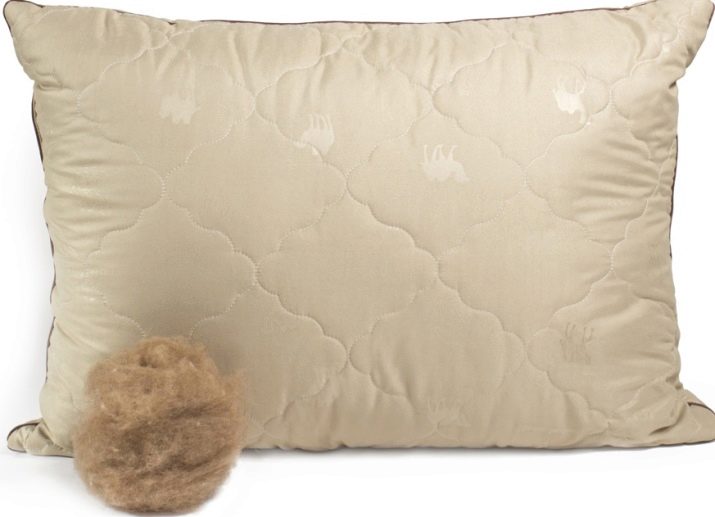Choosing a camel wool pillow
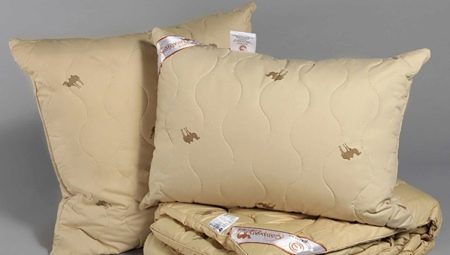
This is not to say that camel hair is the first thing that comes to mind when choosing a filler for a pillow. Nevertheless, this material has numerous advantages that do not fade in the least against the background of the need to provide the product with laborious maintenance.
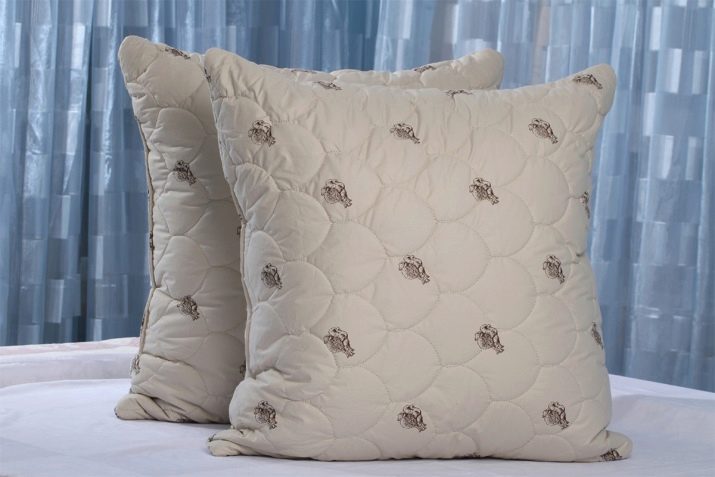
Peculiarities
To make a pillow from camel wool, a filler is used, obtained either from one-humped (dromedary) or from two-humped (Bactrian) camels. The coat of this animal is formed from coarse outer hairs and an inner soft undercoat that looks like fluff. It is the latter that is most often used to form support under the head. At the stage of preparation, the raw material must be immersed in a solution that destroys harmful organisms, and also gives the material the necessary texture and color.
To increase the service life in such products for sleeping, sometimes two compartments are formed: the inner one is filled with padding polyester or bird's down, and the outer one is upholstered with camel hair.
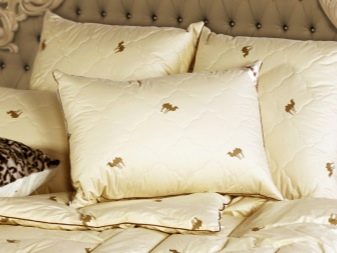
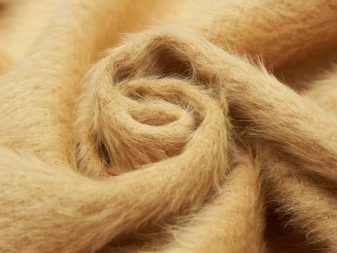
Desert animal undercoat pillows have many advantages. The bedding has a lightness comparable to that of down, it maintains a comfortable temperature in frost and cools on hot days. Down perfectly absorbs, and then evaporates moisture, as a result of which even heavily sweating people do not experience discomfort during rest. Air circulates freely inside the product. The pillow is characterized by antistatic properties: not only does it not electrify itself, but also eliminates static electricity from the objects near it.
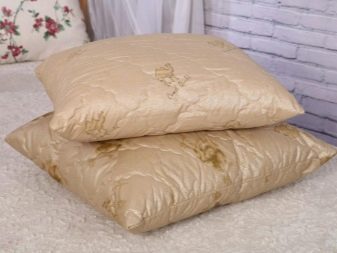
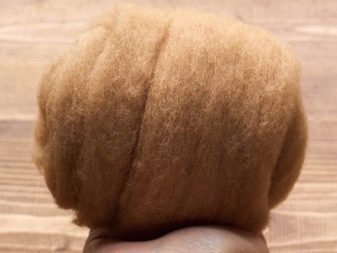
The healing properties of this environmentally friendly natural material have also been proven. Each scaly hair is coated with lanolin, a substance of animal origin similar in composition to sebum. Melting under the influence of human heat, the substance is absorbed into the skin, relieving pain in muscles and joints, as well as improving blood microcirculation.
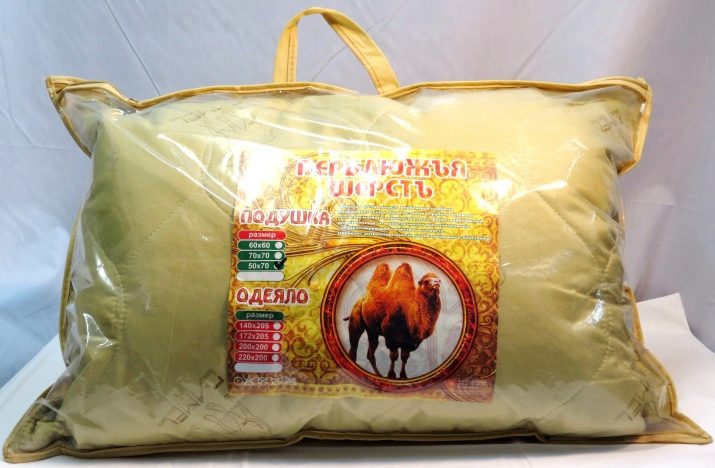
The disadvantages of camel filler are also observed. Woolly fibers contain the protein keratin, which creates ideal conditions for dust mites and harmful organisms to breed. In addition, both lanolin itself and the solution used to treat the filler can provoke allergic reactions. A pillow with animal down is quite expensive, and a low price in most cases indicates a fake. The lifespan of camel filler is short, especially if the rules of care are violated.
The combination of wool and padding polyester lasts 3 years, and wool and bird fluff - about 5 years.
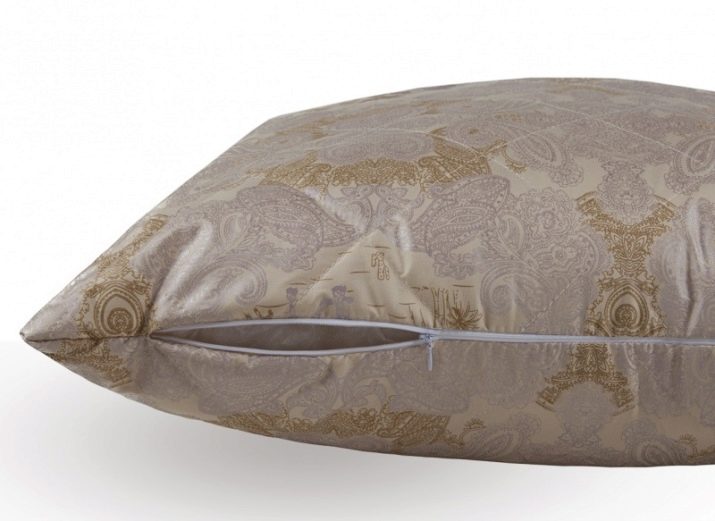
In general, it is quite difficult to care for the "camel" head support, although it does not accumulate dust and dirt inside. It has to be washed on hands, ventilated, whipped and protected from sunlight. It should also be mentioned that the material is not stiff, which means that it is not suitable for people with spinal problems.
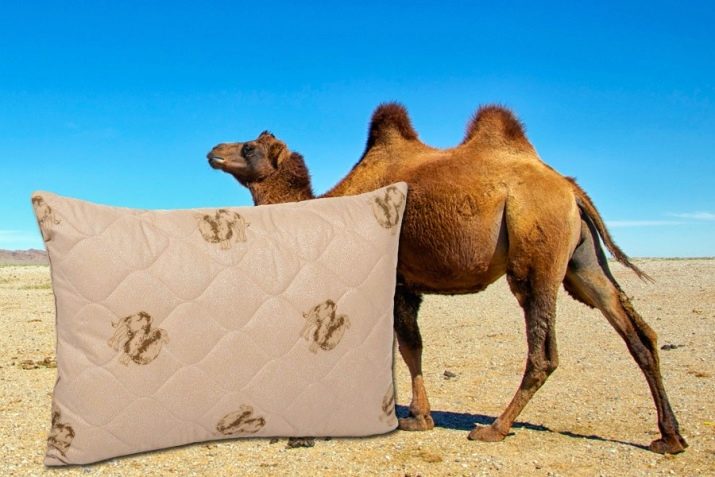
However, it must be added that the unpleasant smell is not considered a lack of camel hair pillows - this is a common myth. In fact, the villi have a slightly sweet aroma, which is destroyed at the stage of preliminary soaking of the material. Again, the headrest is not as prickly as some people think - good handling and use of the headrest prevents itching or burning when using it.
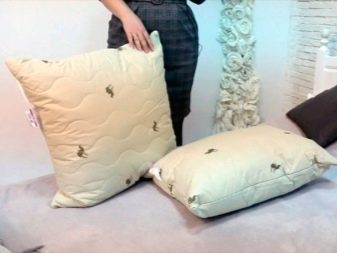
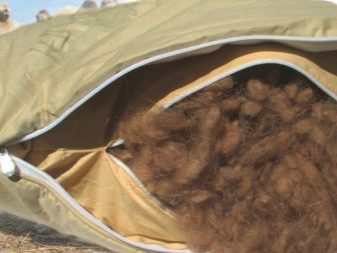
Comparison with sheep wool pillows
Sheep wool, like camel wool, is a filler of natural origin. Despite the fact that the materials have similar pros and cons, for people with increased sensitivity, it is better to use an undercoat of dromedaries or Bactrians. - the material is less prickly and less likely to cause itching. The napkin stuffed with sheep's wool looks more voluminous due to the coarse structure of the hairs. A soft "camel" pillow, on the contrary, quickly flattens, which does not look very aesthetically pleasing.
It is also important to mention that the thermal conductivity of camel wool is superior to that of sheep, and also allows the air to circulate more efficiently.
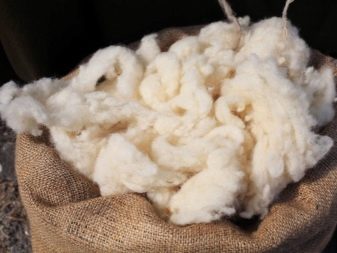
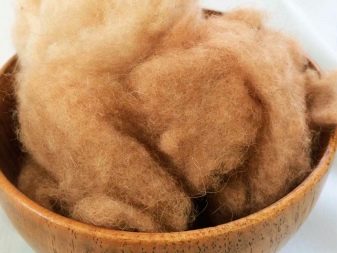
Views
Camel hair pillows can differ in several ways.
By surface material
Cotton teak, percale, microfiber or synthetic satin are usually used for the pillowcase - that is, a dense fabric that does not allow the filling fibers to pass through. More expensive models are “packed” in silk. It is customary to decorate the edges of the covers with a neat piping or even supplement with a zipper. The presence of the latter allows you to adjust the amount of filler, depending on the preferences of the owner of the pillow.
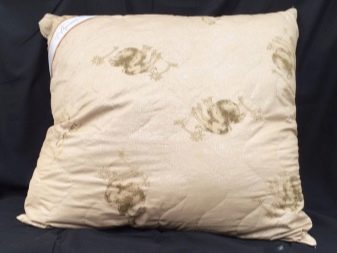

By the content of wool in the filler
The product label usually indicates the wool content of the filler. The mark “camel hair - 100%” indicates that there is only one component in the napkin. If the label simply says "camel wool", it means that natural raw materials are present in percentage terms, and the filler itself is heat-sealed. As an additional component, the products contain swan down, buckwheat husk or siliconized fiber.
For example, a product may contain two layers, the first of which consists of 40% mammalian wool and 60% polyester fiber, and the second layer is formed from swan down.
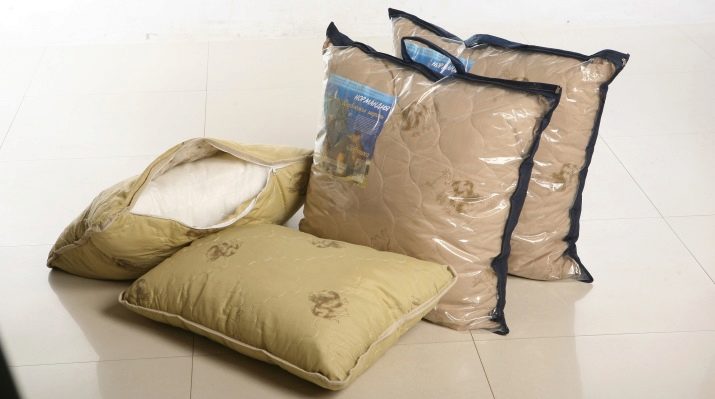
Sizes and shapes
The price depends on the size of the pillow based on the camel undercoat. It is customary to distinguish four main configurations of products: with dimensions of 40x60, 50x70, 60x60 and 70x70 centimeters. As you might guess, the first two of them are rectangular, and the last couple are square. The weight of the pillow ranges from 450 grams to 1.5 kilograms.
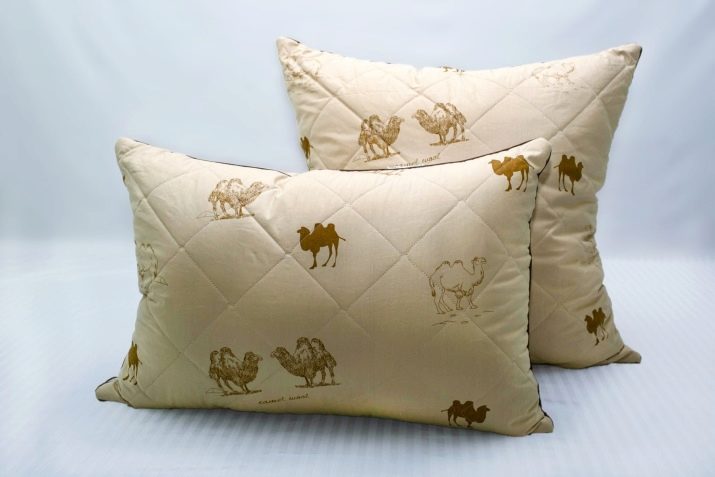
Popular brands
Camel hair pillows are present in the assortment of leading home textile manufacturers. These include the brands Dargez, Verossa, Alvitek, Ecotex, Togas and many others.
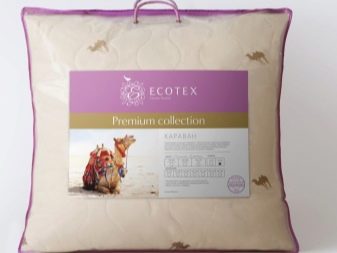
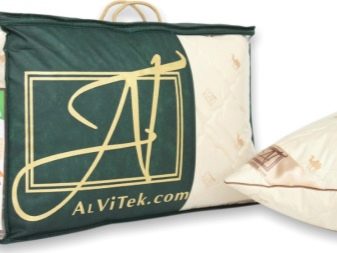
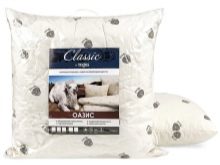
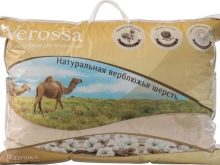
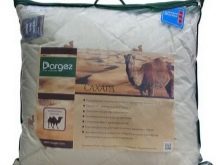
How to choose?
To find the most comfortable "camel" pillow for sleeping, you must first study the information provided by the manufacturer, especially the percentage of mammalian hair. To guarantee the quality of raw materials and pre-processing, you should only use trusted brands. We must not forget that the service life of raw materials is rather limited, and in order to increase it, it is better to give preference to two-section structures.
It is also important to critically evaluate the fabric from which the napernik is made - synthetics, most likely, will minimize all the advantages of the filler, including the ability to pass air.
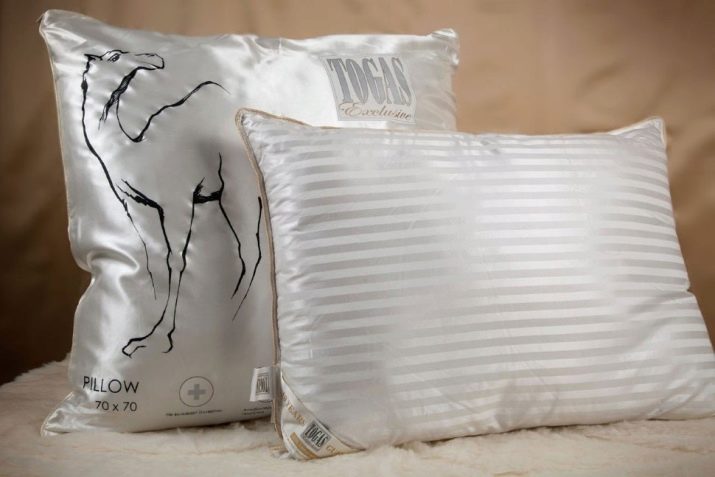
Pillows are chosen depending on the age and body type of the user, and therefore the width of the shoulder. So, children's products intended for people with a shoulder length of up to 15 centimeters should have a height of 10 centimeters. A shoulder length of 15 to 20 centimeters requires a 12 centimeter height, and more than 20 centimeters requires an indicator equal to 14 centimeters. The headrests, which are 8 to 10 centimeters in height, are ideal for sleeping on your back and 10 to 13 centimeters for sleeping on your side. For those who like to sleep on their stomachs, it is better to purchase bedding with a height of 6-8 centimeters. In addition, the softer the mattress, the lower the pillow should be.
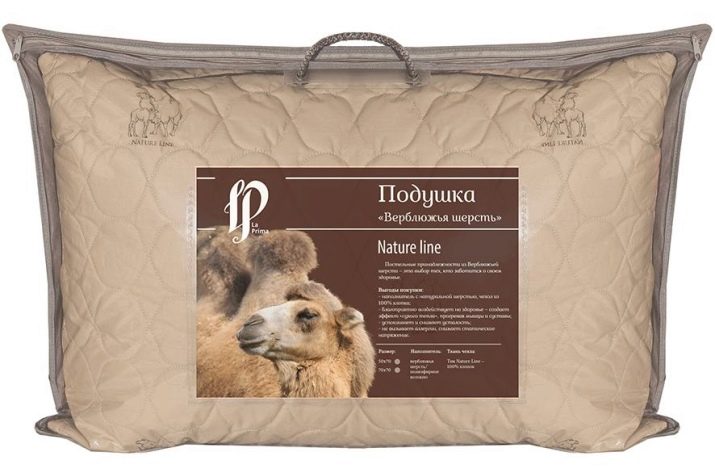
How to wash?
A categorical prohibition on washing a pillow with a mammalian undercoat is usually indicated on the product label along with other care instructions. In other cases, it is wiser to give preference to hand wash. The garment is pre-freed from the pillowcase and soaked for a quarter of an hour using a cleansing gel designed for woolen garments. After rinsing in warm water, the pillow is gently wrung out with light longitudinal movements.
It is important not to twist it in any way, otherwise the wool fibers will be damaged.
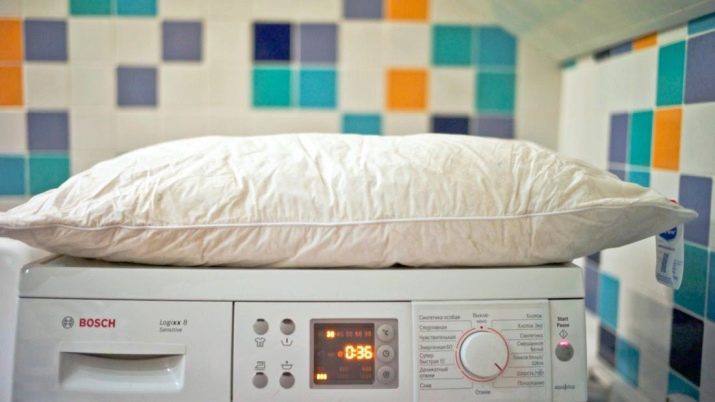
The product should be dried on a horizontal surface, protected from direct sunlight.
Dry cleaning of bedding is not prohibited, but you should be prepared that the quantity and quality of lanolin will be significantly reduced, which means that the service life of the product will become shorter. And also experts do not recommend sending a pillow into the drum of an automatic washing machine, but if the content of camel wool is low, you can try it. On the control panel of the device, the “wool” mode or the “delicate / hand wash” program is activated. Instead of powder, a liquid agent for woolen products is poured into the compartment, which dissolves well in water, and the temperature is manually reduced to 30 degrees. Products cannot be wrung out in the device - only by hand, but it is recommended to additionally rinse.
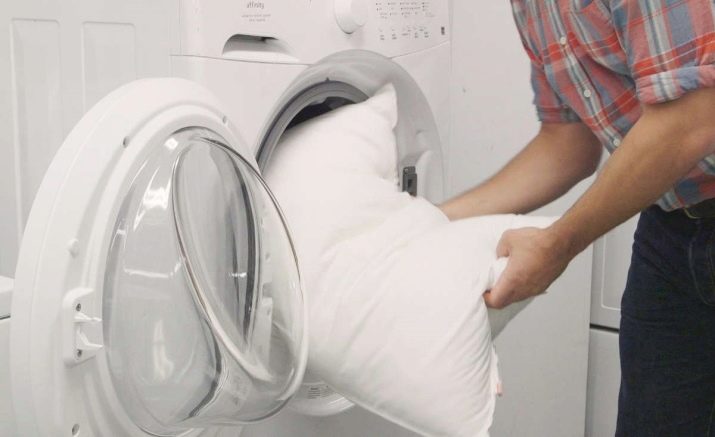
Naturally filled pillows should be regularly ventilated in areas where fresh air is available at all times. - for example, once every three months it is useful to take them out on the balcony for several hours. In winter, the product is knocked out of dust accumulations. It is recommended to wash bedding every six months or even a year. You are advised to ventilate the newly purchased model outdoors for several hours, protecting it from direct sunlight.
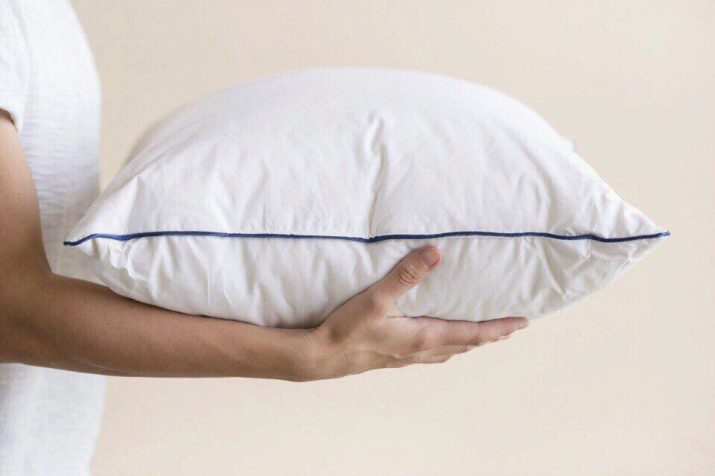
Review overview
Customer reviews of "camel" pillows leave a very pleasant impression, and the greatest delight it causes among people suffering from excessive sweating. Among the advantages of the product are excellent thermoregulation and the ability to "breathe", as well as high-quality stitching of seams and shape retention. According to consumers, the headrest is extremely rare to cause allergies and is generally quite pleasant to the touch. The main disadvantages of the product, judging by the responses, are the complexity of care, as well as not always a high-quality napert.
